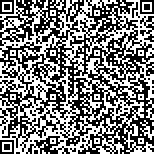下载中心
优秀审稿专家
优秀论文
相关链接
摘要

离水辐亮度Lw(Water-leaving radiance)是水色遥感现场观测中的关键物理量之一,由其计算获得的遥感反射率Rrs(Remote sensing reflectance)是水色遥感参数反演的最基本参数。天空光遮挡法SBA(Skylight-blocked approach)可以直接测量水体离水辐亮度,作为一种新兴方法具有较强的推广应用潜力。本文介绍了基于天空光遮挡法的便携版漂浮式光学浮标FOBY-P(the Portable Floating Optical Buoy),其具有浮体自阴影小、布放简便等优势,在中国近海开展的现场观测实验结果表明:(1)FOBY-P结构设计上能在一定程度上避免太阳天顶角较大条件下浮体的自阴影遮挡影响,初步评估结果表明其400—700 nm自阴影影响在浑浊水体<5%,在清洁水体约为1%—3%;(2)在高海况下,传感器倾角随海况增大而变化剧烈,FOBY-P能保证在3—4级海况下观测倾角小于5°的有效观测占比超过50%;(3)通过与基于水面以上法的三通道TriOS RAMSES高光谱辐射计同步观测结果对比,二者一致性较高(r>0.9),在490—565 nm波长范围内Rrs的偏差<5%,差异可能由观测方法不同引起,水面之上法水—气界面校正的不确定性可能是引起部分偏差的重要因素之一。该研究表明便携版漂浮式光学浮标(FOBY-P)可满足近海较高等级海况(3—4级)下的复杂水体现场观测需求,随着针对FOBY-P的数据质量控制与处理方法的不断优化,有望获取更高质量的现场水体光谱观测结果。
关键词:
水色遥感 水体光谱 现场测量 天空光遮挡法 便携版漂浮式光学浮标Water-leaving radiance (Lw) or remote sensing reflectance (Rrs) is a fundamental parameter of water color remote sensing. It has been a long-standing and challenging goal to precisely measure Lw. Skylight-Blocked Approach (SBA), a novel approach for in-situ water spectrum measurement, can observe Lw directly screening the impact of the skylight in above-water method. It is not necessary to fulfill complicated post-processing to derive Lw by using SBA, which makes it has great potential to be used in different types of water body. However, there is not an automatic portable instrument to obtain water spectrum through SBA until now. In this study, a portable floating optical buoy (FOBY-P) is developed and tested. FOBY-P has its advantages with a smaller self-shading and an easier deployment compared with previous versions of FOBY with a circular floating body. The in-situ measurements in the coast of China through FOBY-P were carried out from October to November 2018 to test the buoy system. The results showed that 1) The self-shading effect of the floating body on the Lw observation under a large solar zenith angle can be effectively avoided by the tripod design of FOBY-P. The errors caused by the self-shading were less than 5% for the Rrs of 400—700 nm when it was used in turbid water. And the self-shading effect was only 1%—3% used in clear water; 2) FOBY-P can keep the sensor stable in the different sea state levels. Its effective observation ratio (the tilt angle less than 5°) is over 98% in the 1st sea state. The sensor tilt angle would be greater and greater when the sea state becomes worse. However, the ratio can still reach approximately 50% for the 3rd and 4th sea state; 3) The derived results of FOBY-P are in good agreement with those of TriOS RAMSES sensors. The correlation coefficient r between the Rrs of FOBY-P and that of TriOS RAMSES is larger than 0.9, and the Rrs difference of them is less than 5% for 490—565 nm. The difference may be caused by the different processing procedures of the two systems with different approaches. The water-air interface correction processing may be one of the factors to cause the uncertainty of TriOS RAMSES observations with above-water method. The result shows that FOBY-P has some advantages in platform stability, ease of use, and measurement accuracy as an automatic water spectrum acquisition instrument based on SBA. In general, FOBY-P can satisfy the requirements of in-situ measurement of Rrs in optically complex coastal waters, even during moderate sea state to provide high-quality data. Furthermore, it is only the first version of FOBY-P and further optimization in the design and data processing would improve the performance of the instrument.

